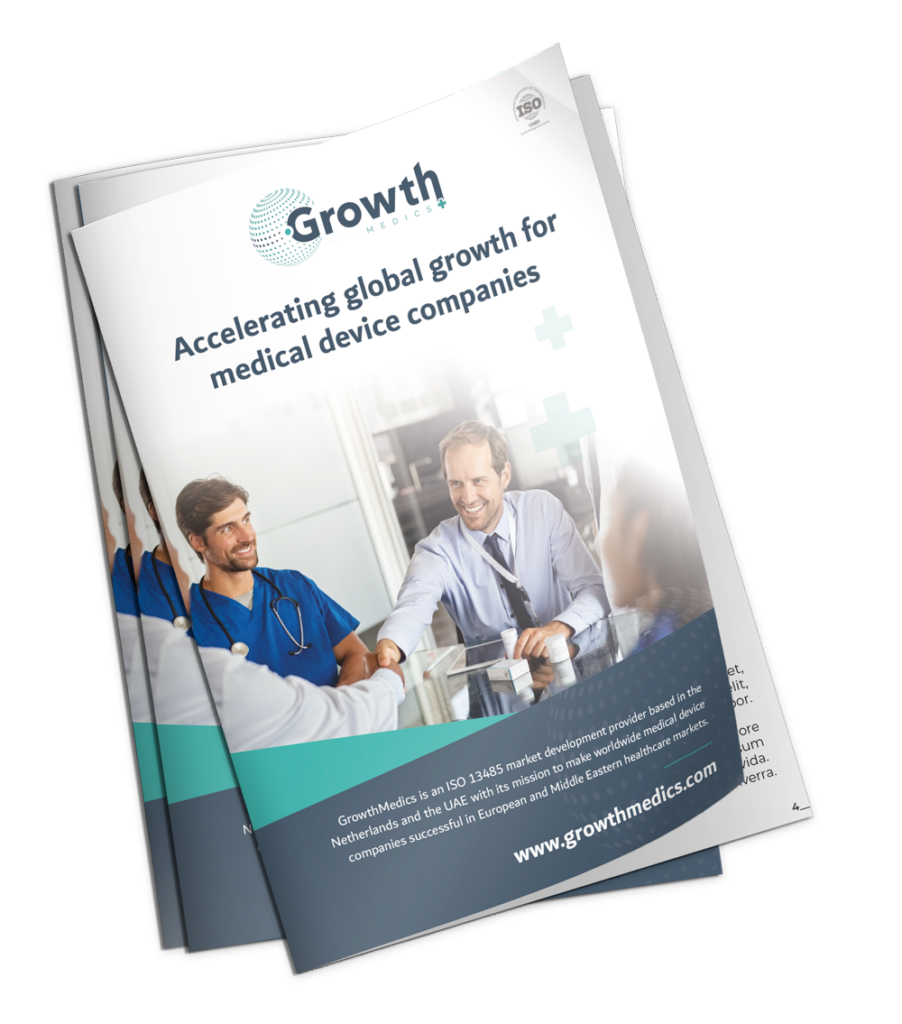Germany is home to some of the best medical device manufacturers in the world. While a “made in Germany” stamp is equated with excellence and quality, this hasn’t deterred foreign companies from entering the German market. The German medical device (MED) trade is governed by regulations that maintain quality and cultivate fair competition for every company. GrowthMedics has assisted numerous medical device companies with their expansion in German Medical Devices Market. This blog will provide a high level overview of the German healthcare market. If you are considering expansion in Germany, feel free to reach out to us for assistance.
Growth of the Healthcare Industry in Germany
Germany had 4 zones which were previously two countries, the east and the west. Ninety-five percent of the population speak German and use Euros. There is still a strong lack of English speakers, especially in the older generations.
In contrast to Italy’s medical device market, Germany was able to sustain losses and maintain growth. In fact, Fitch Solutions estimates that the market will continue to grow by around 5.1% to 6.8% until 2025.
These numbers account for the progression of COVID-19 in Germany. There’s steady growth on the horizon despite the threat of extended lockdowns and new viral strains.
Like other EU countries, medical devices need a CE marking before they can be sold in the market. You should also take into account the 19% VAT and the regulations imposed by the EU MDR before doing business here.
What Is the German Healthcare Expenditure Like Compared to the Rest of the EU and the World?
In 2019, the Germans spent 410.8 billion Euros (over $379 billion) in healthcare. Compared to the global and EU average, German healthcare expenditure is higher with at least 11.2% of the GDP allotted to the sector.
This is an encouraging number particularly in light of the fact that the average expenditure of 16 Organisation for Economic Co-operation and Development (OECD) countries is just shy of 10% of their GDP.
Statistics
Germany is a powerhouse when it comes to healthcare providers, establishments, supplies, and technology. The following are statistics about Germany to consider.
Number of hospitals – about 2,000
Public hospitals account for half of these hospitals and whereby 30% of them are University hospitals.
The remaining 50% are privately owned hospitals. The majority of these hospitals or 30% are not-for-profit.
The three biggest hospital groups in Germany are the University Clinic Heidelberg Universitätsklinikum Heidelberg, Asklepios Klinikum Bad Abbach, and the Universitätsklinikum Hamburg Eppendorf.
Number of physicians – 515,640
Number of dentists – over 97,000
Number of veterinarians – around 41,000
Growth rate – around 5.1% to 6.8%
While information about Germany’s current import and export activities remains vague, one thing is certain: it’s still among the largest markets in the world. In fact, the COVID-19 pandemic created more urgency and demand for medical devices.
The German healthcare field is made up of just about 50% public hospitals, 30% public hospitals, and 20% private hospitals (divided between for-profit and nonprofit). There are several private German hospital groups that operate within this sector such as:
- Asklepios
- Vivantes-International
Top Events and Trade Shows
Germany has many trade shows and events that medical device companies and representatives can participate in such as:
Furthermore, you could also look up relevant information and stay up to date on relevant medical device industry news and happenings using social media platforms that many Germans frequent such as LinkedIn and Xing.
Competition
There are over 3,331 medical device companies registered in Germany. Take a look at some of the largest players based on revenue:
- MAQUET GmbH Rastatt
- Erbe GmbH Tübingen
- Storz Endoskop Produktions GmbH Tuttlingen
- BIOTRONIK SE & Co. KG Berlin
Distribution
Nordrhein-Westfalen contains the most hospital beds out of all the regions in Germany – accounting for around 21% of Germany’s hospital capacity. One thing you should consider when it comes to distribution is looking into medtech hub clusters.
Here are some of the most popular ones:
- BioConValley has 50 companies, 5 universities and 12 research institutes
- Life Science Nord has around 500 companies, 2 university hospitals, 8 universities, and 14 research institutes in its system
- Medical Valley EMN e.V. has over 500 companies, 2 university hospitals, 8 universities, and 21 research institutes in its cluster
Medtech hubs focus on providing resources on selected healthcare specialties. Some may focus on rehabilitation, while others may usher in technology and medical advancements in the cardiac field.
Further, when doing business in Germany, you will need to consider looking for a local language partner to help with translation of materials and honing your speaking skills.
When working with distributors, it’s important to register your device accordingly. For more information, you can read about the process here.
You should also look into local medical device distributors such as:
Conclusion.
Germany is advanced in its own right. With thousands of local manufacturers and a strong import-export strategy, the MED industry is in good shape.
Projected market growth in the next 4 years is positive. Combined with the country’s uptrend in healthcare expenditure, it only makes sense to explore one of the largest medical device markets in Europe.
Overall, we can confidently say that Germany is among the most lucrative markets. However, you’ll have to take into account competition given the fact that Germany is known for its high-quality equipment.

